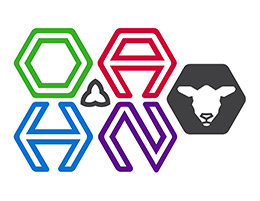Ontario Animal Health Network (OAHN)
Small Ruminant Expert Network
Report
Animal Health Laboratory Q2&3 2024 Case Data Summary
Prepared by Dr. Amanda Mansz, AHL Pathologist
Q2&3 2024 small ruminant case submission totals (above) and case trends (below).
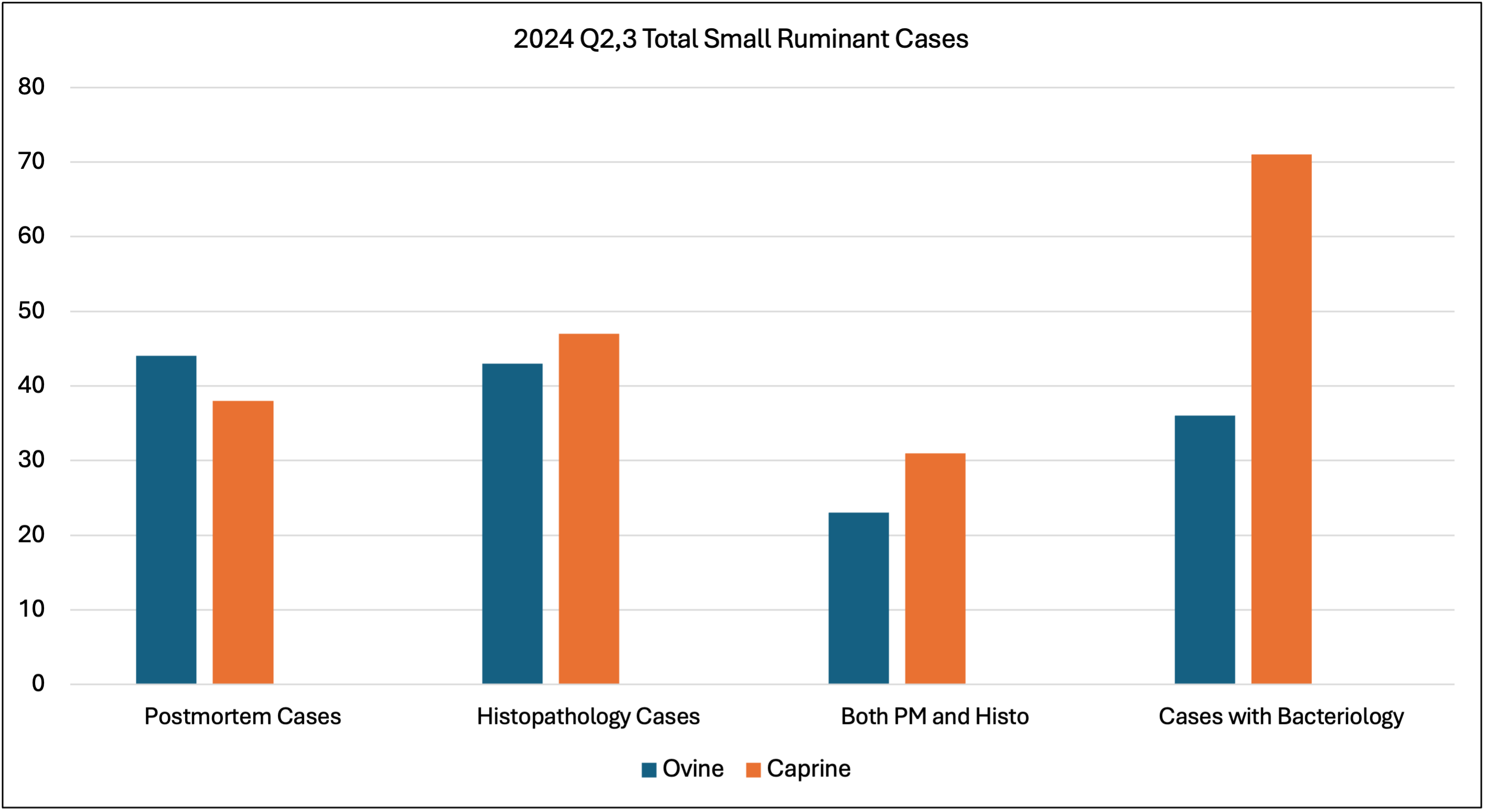
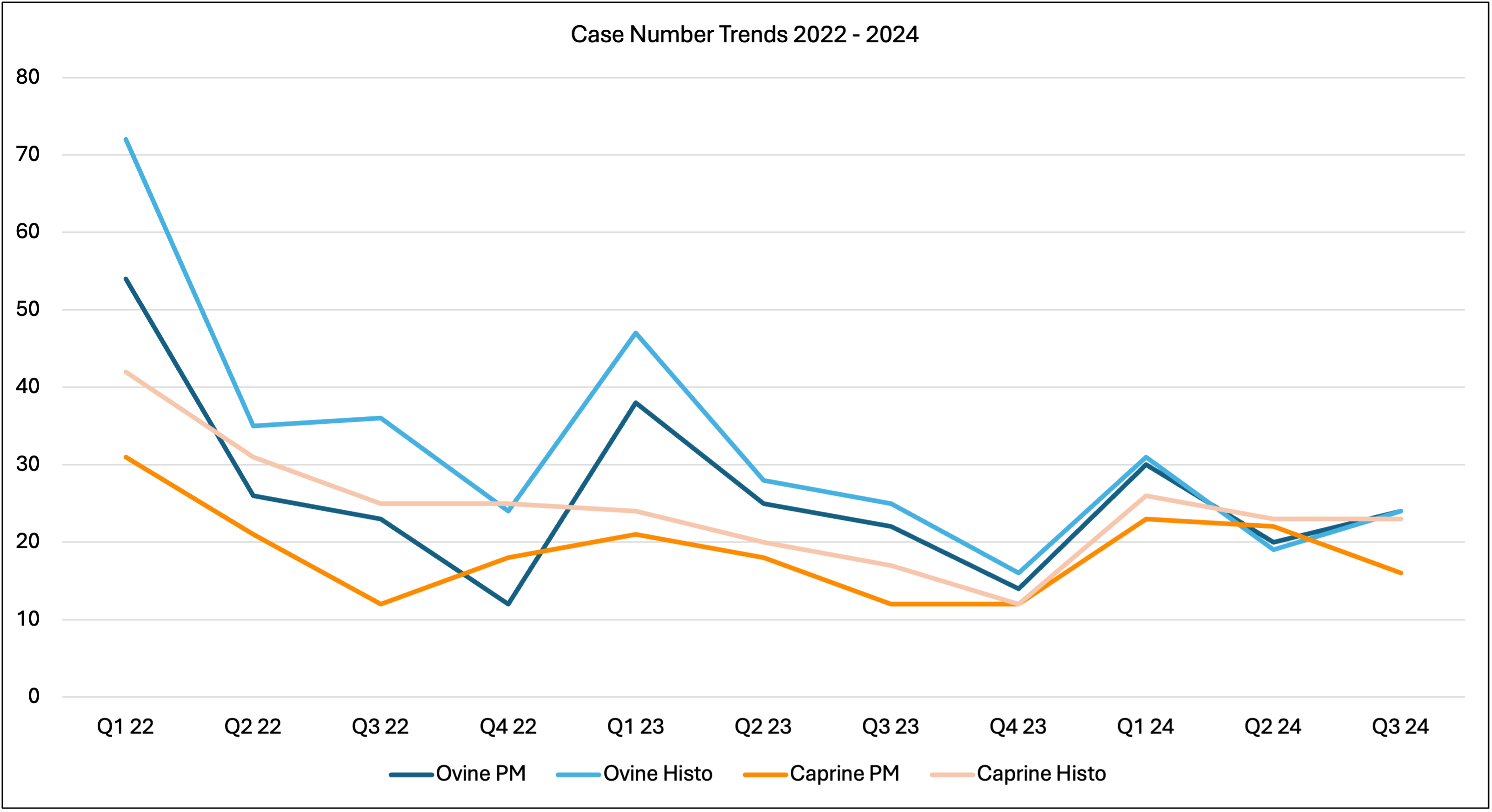
- 20 and 24 ovine postmortem cases were submitted to the AHL and OVC-PBI during 2024 Q2 and 3. 19 and 24 histopathology cases from both laboratory and on-farm postmortems/biopsy were also examined by pathologists. 10 and 13 cases had both postmortem and histology performed; this comprised 50 and 54% of total postmortems submitted.
- 22 and 16 caprine postmortem cases were submitted to the AHL and OVC-PBI during 2024 Q2 and 3. 23 and 24 histopathology cases from both laboratory and on-farm postmortems/biopsy were also examined by pathologists. 16 and 15 cases had both postmortem and histology performed; this comprised 80 and 93 % of total postmortems submitted.
Abortion case findings for ovine (above) and caprine (below) workups.
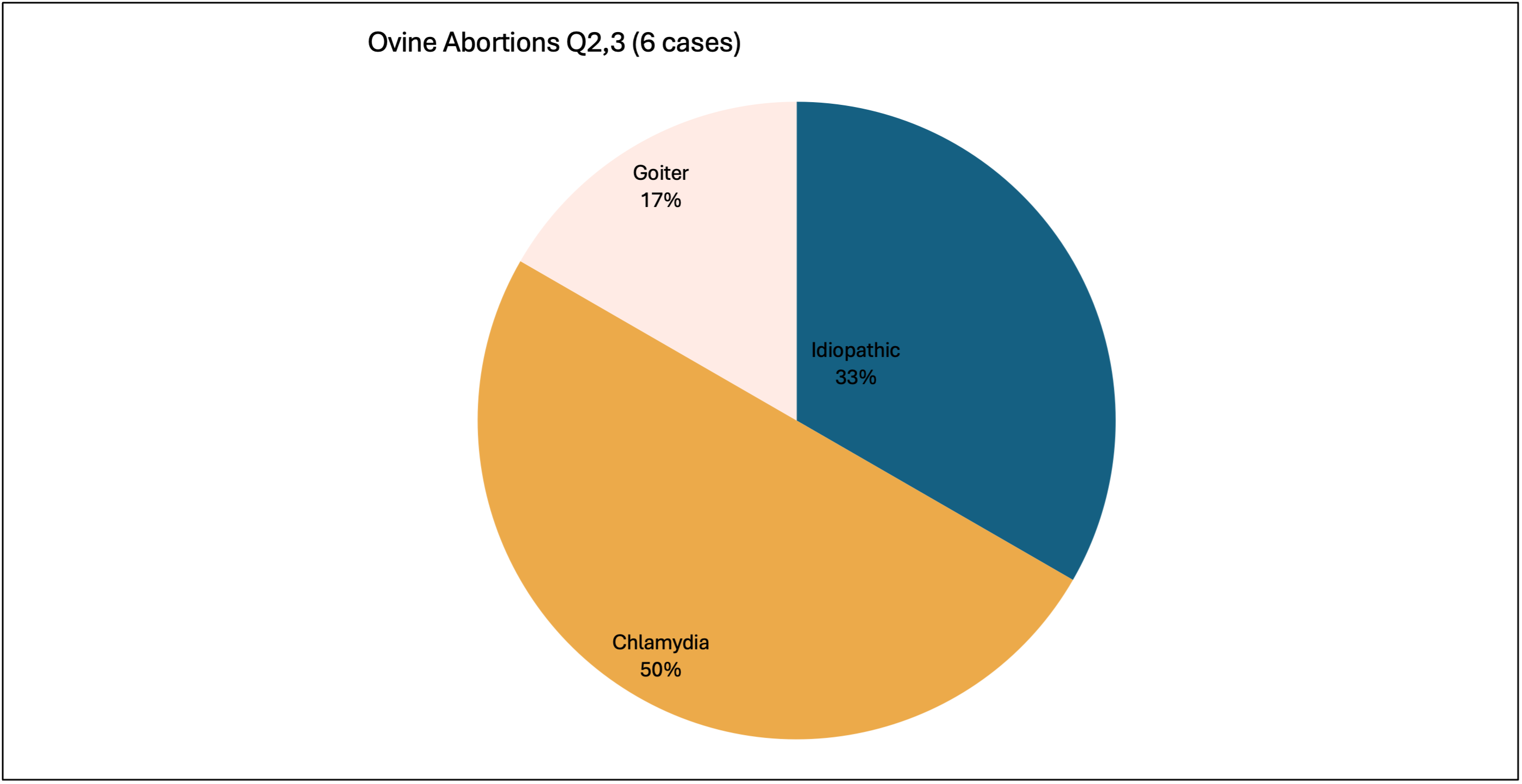
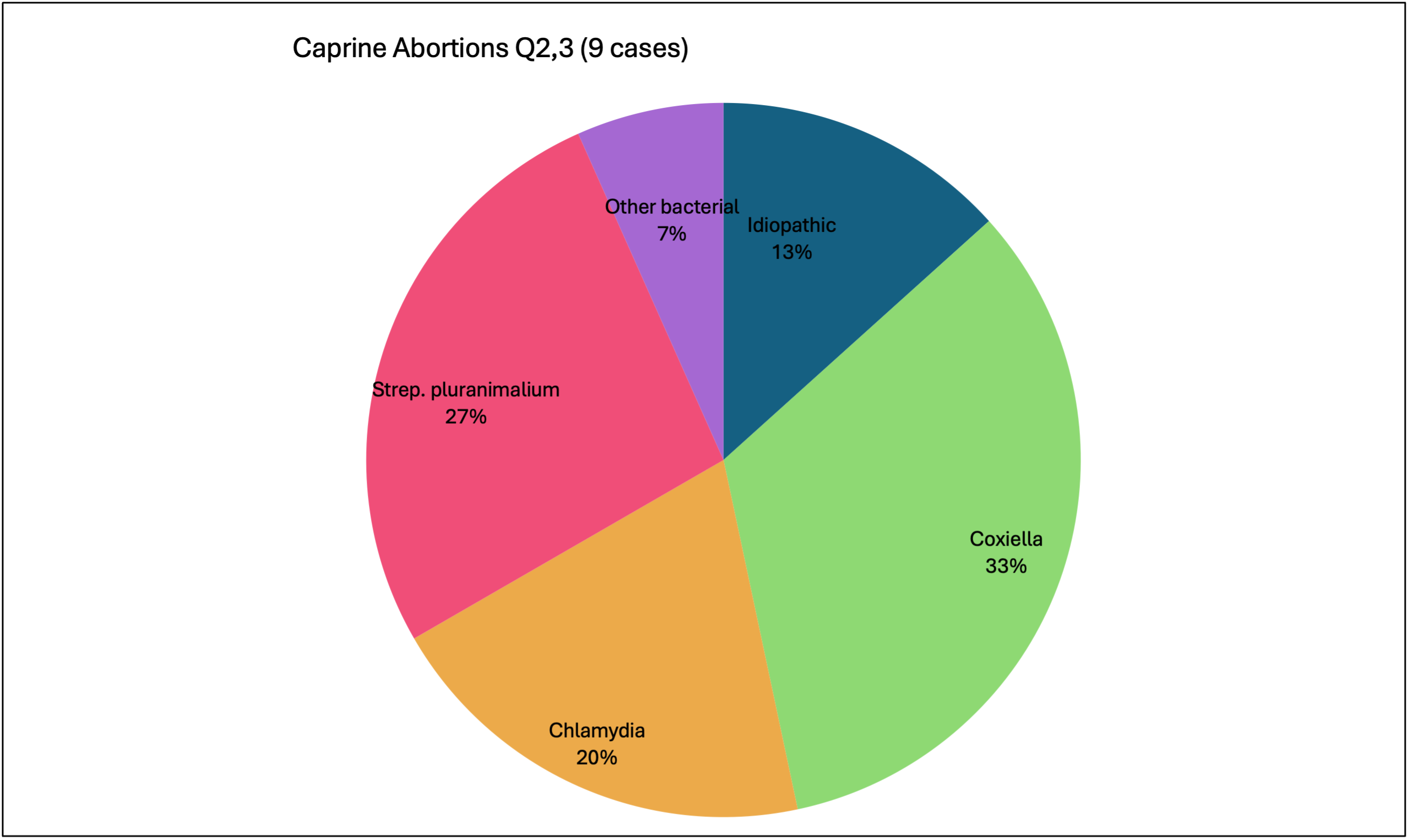
- Ovine comments: The numbers of ovine abortion cases (6) submitted follows a similar dip in submissions in the Q2,3 (summer/fall). 2 Idiopathic abortions: 1 did not receive a full work up (Only gross PM and PCR tests for Chlamydia, Coxiella and Toxoplasma ), the second had a full workup was suspected to be non-infectious cause
- Caprine comments: The numbers of caprine abortion cases (9) submitted this Q2 and is similar to previous summer/fall submissions. Two Idiopathic abortion had full workups with no microscopic inflammatory lesions suggesting non-infectious causes
Click here for an AHL newsletter article on A retrospective analysis of 10 years’ submissions of small ruminant abortions (2014-2023)
Below: Respiratory case findings for ovine (above) and caprine (below) workups.
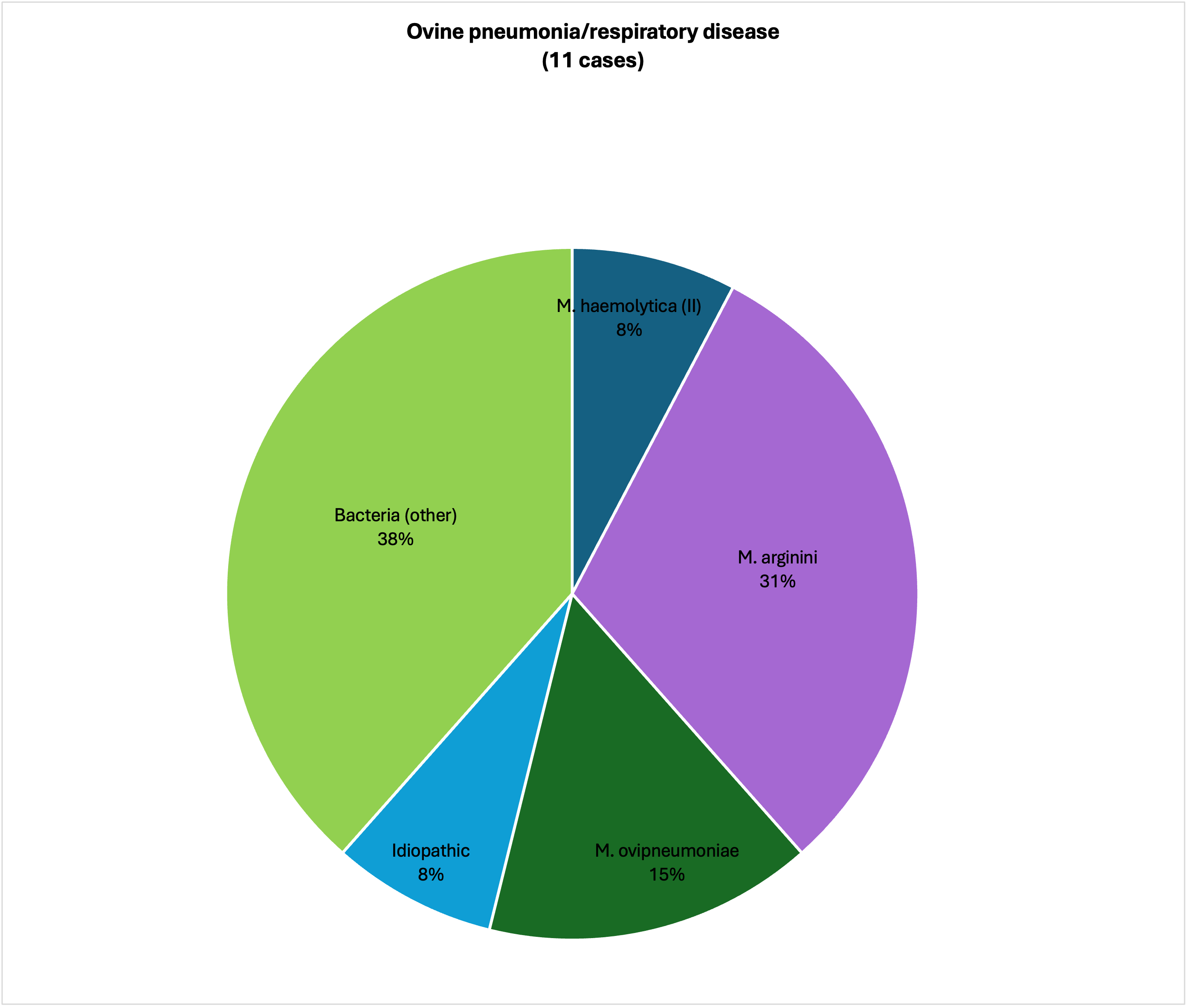
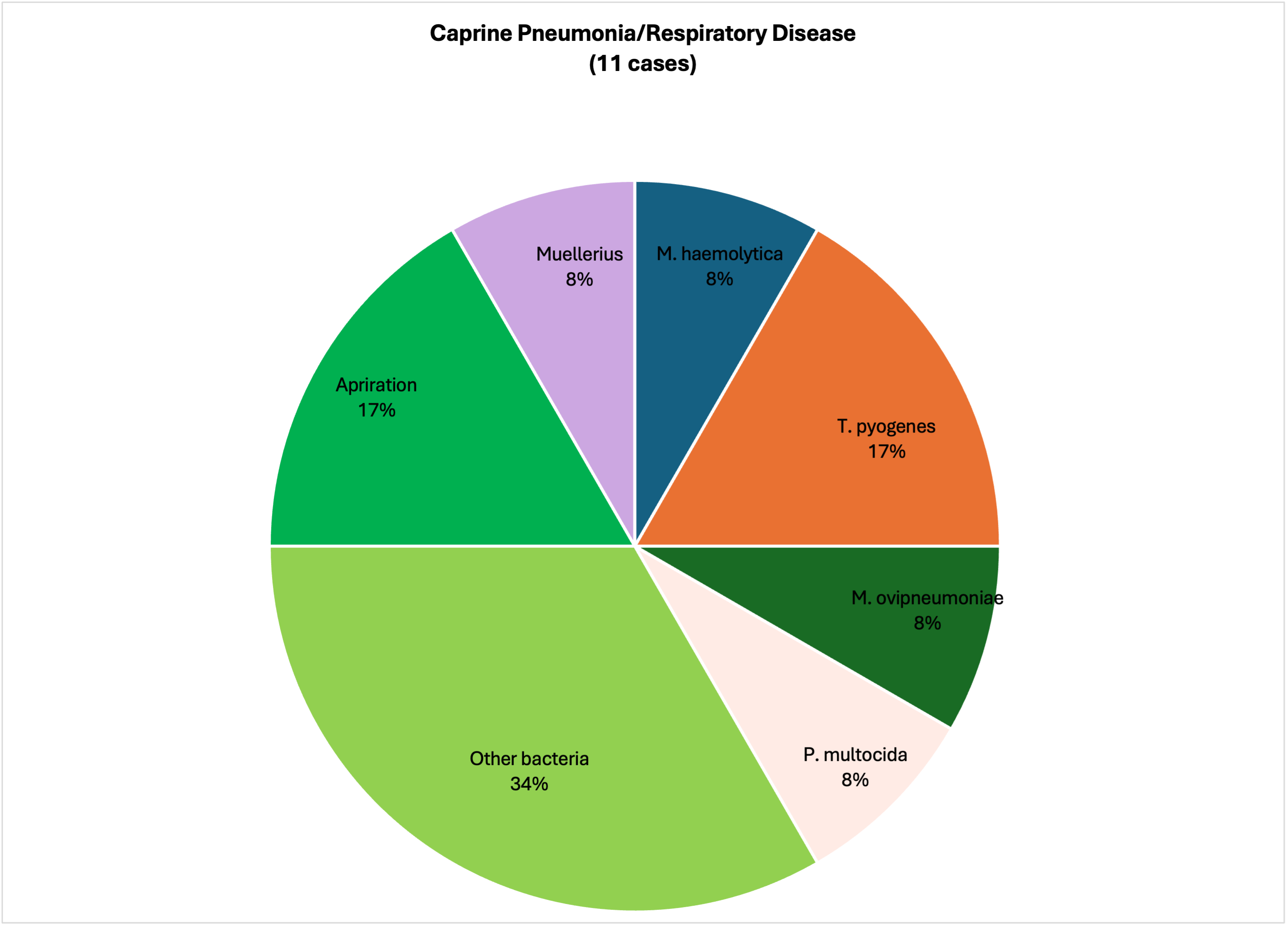
- Ovine comments: Case numbers are slightly higher than other quarters, Mycoplasma arginine and ovipneumoniae made up a large proportion. The single idiopathic case only had the gross PM completed. The “other bacterial pathogens” included H. somni and one Mycoplasma mycoides subs capri (Contagious caprine pleuropneumonia) provincially notifiable. No cases of MVV or Nasal adenocarcinoma were diagnosed by pathologists.
- Caprine comments: “Other bacteria” include one case Strep. pluranimalium and 3 cases without culture but lesions of bacterial pneumonia. No cases of CAE were diagnosed by pathologists.
Below: CNS case findings for ovine (above) and caprine (below) workups.
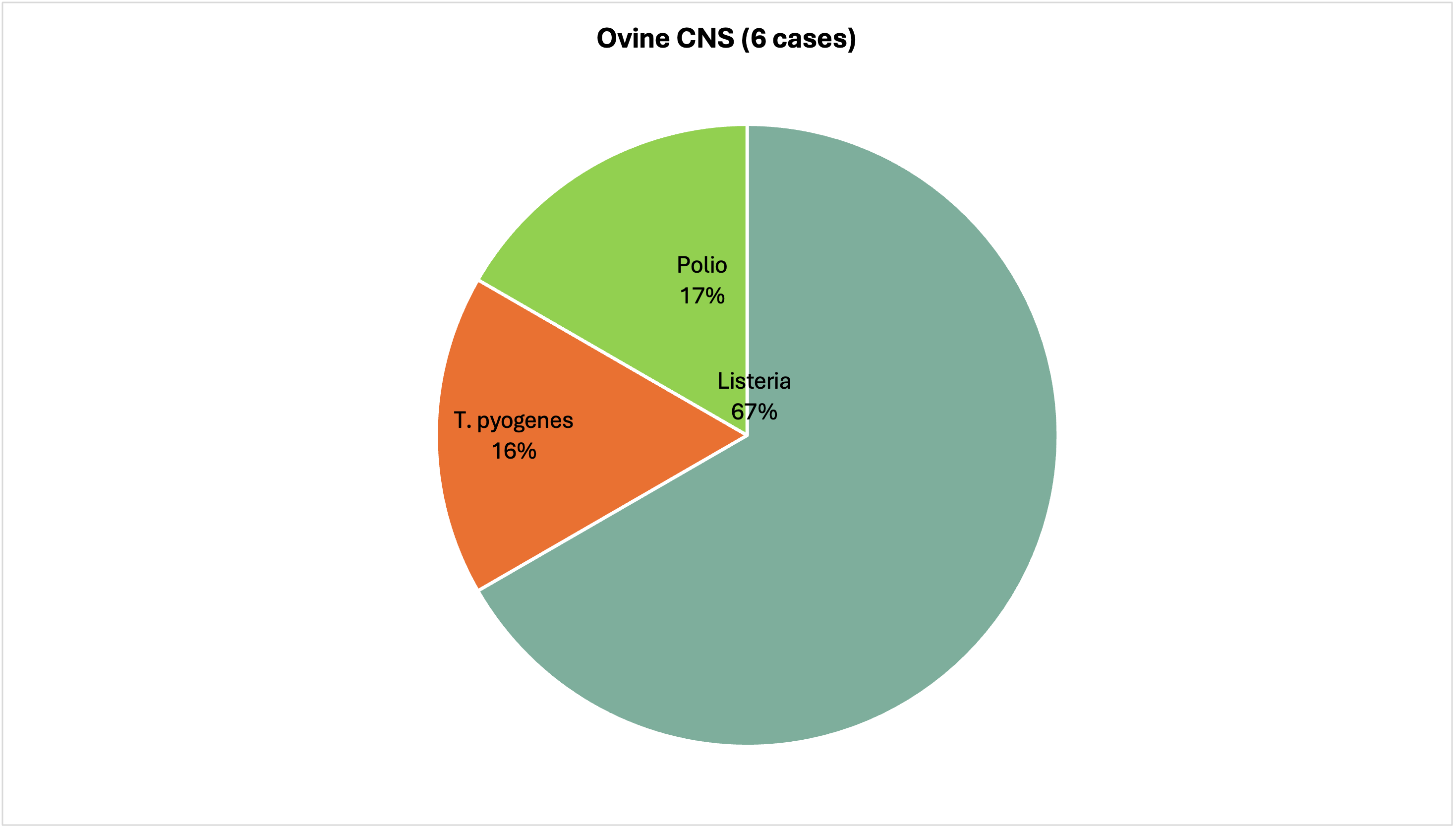
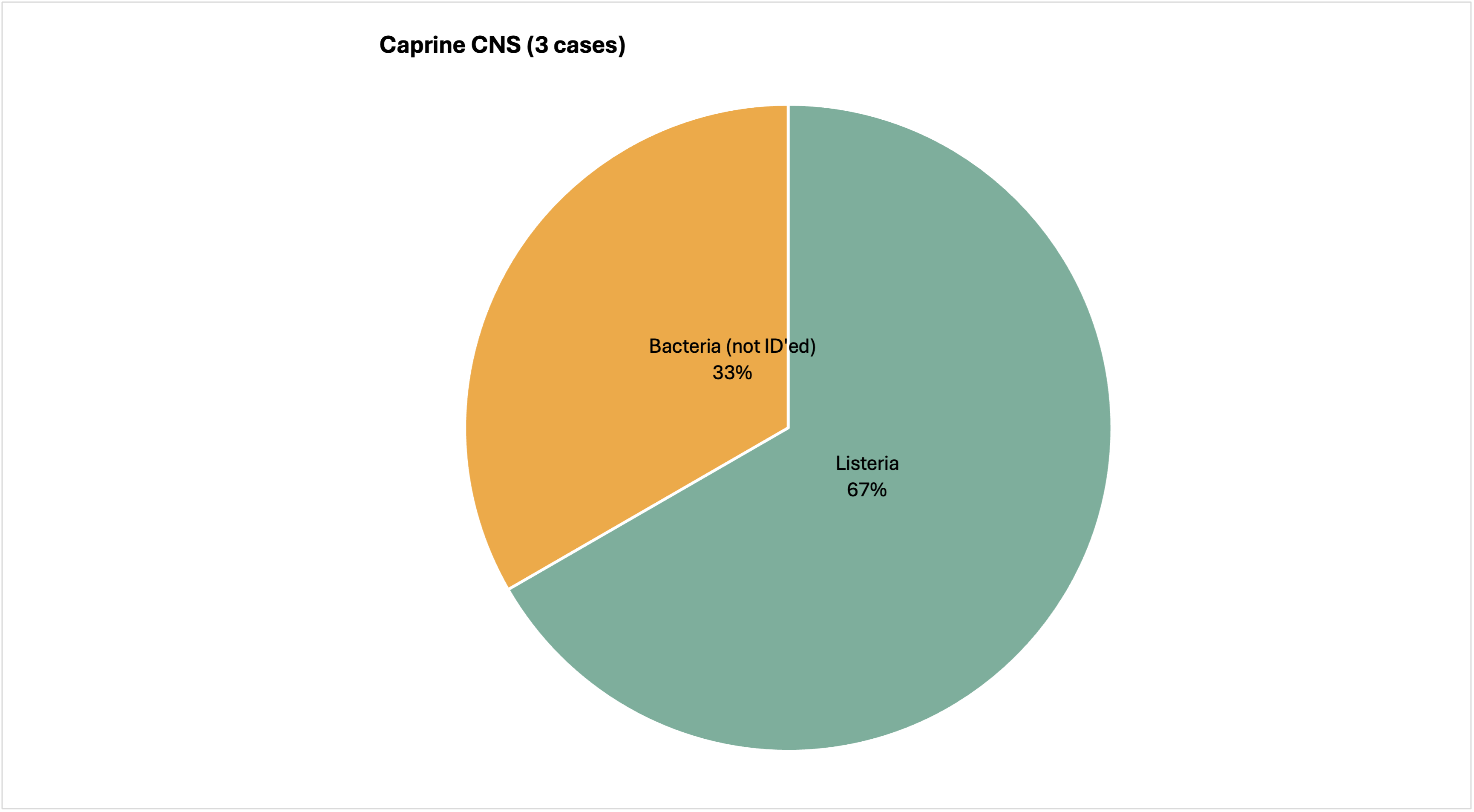
- Ovine comments: Listeria monocytogenes continues to be the biggest contributor.
- Caprine comments: Cases are down from last quarter. All bacterial causes.
| Sheep | Goats | |
| Maedi-Visna Virus/ Caprine arthritis encephalitis (CAE) | The numbers of serologic tests performed for Maedi-Visna virus is slightly increased from the previous quarters with a case number of 35 (838 individual serum samples) and 41 (519 samples) in Q2 and Q3; whereas the previous quarter was 31 cases (564 samples). The positive case rate (one or more positive samples per case submission) was 17% (6 total positive cases) and 36 % (15 total positive cases) – previous quarters 22% (2024 Q1). | The numbers of serologic tests performed for CAE virus has slightly decreased from previous quarters with a case number of 49 (1368 serum samples) in Q2 and 45 (579 serum samples). There were 34 positive cases (140 samples) which is on trend with previous quarters. No cases were diagnosed by pathologists. |
| Johne’s Disease | Johne’s submissions slightly increased these 2 past quarters. In Q2, 9 cases (18 samples) and in Q3, 8 cases (61 samples) were submitted for ELISA. In Q2, 3 cases (6 samples) and Q3, 5 cases (10 samples) were submitted for PCR. In both quarters together cases identified by ELISA include 3 positive cases (3 samples) and by PCR include 6 cases (10 samples). | Johne’s submissions continued at the same rate as previous quarters. A total of 19 cases (245 samples) were tested [50(148)ELISAs and 41(96) PCRs].
16 cases (20 samples) were positive by ELISA and 18 (31 samples) positive by PCR. An additional three cases were diagnosed by a pathologist. AHL Newsletter Highlight: Johne’s Disease (Mycobacterium avium paratuberculosis) infection in goats. Includes a short review of common gross and histological lesions. |
| Copper Toxicity | No cases. | No cases. |
| Scrapie | There were 3 cases (4 samples) submitted for testing; NO positive cases. | There were 2 cases (3 samples) submitted for testing; NO positive cases. |
| GI Parasitology | Case numbers for these last 2 quarters together were similar to the previous quarters; 14 cases (17 samples). As usual, the most frequently identified parasites were coccidia 14 (17) and GIN eggs 10 (11). There were 2 (2 samples) diagnoses of cestodes, 4 (4) of Nematodirus, 6 (8) Strongyloides and 1(1) trichuris. FOUR cases of haemonchus were diagnoses by pathologists. | Submissions for GI parasitology examination were on par with previous quarters (total for both quarters is 39 cases (56 samples), and the most frequently identified parasites by flock including coccidia (30 cases), GINs (20), Trichuris (4), and Cryptosporidia (11). There were 2 cases of cestode/Moniezia and 1 of Strongyloides and 1 of Skrjabinema caprae (pinworm). No case of haemonchosis were diagnosed by pathologists. |
| Clostridium perferingens | Isolation was similar to previous quarters: 11 cases isolated clostridium perfringens (Q2 & 3) and only 6 were genotyped. Only 1 was typed as C. perfringens type D causing enterotoxemia (1 C. perfringens type A, 3 C. perfringens type A with Beta-2 toxin). One case of Enterotoxemia was diagnosed based on pathology alone. | Isolation was increased compared to previous quarters: 27 cases isolated clostridium perfringens and 14 were genotyped. Seven were typed as C. perfringens type D causing enterotoxemia (3 C. perfringens type A, 4 C. perfringens type A with Beta-2 toxin). No cases of Enterotoxemia were diagnosed based on pathology alone. |
| Salmonella | 17 cases of bacterial culture received Salmonella enrichment and there was only 1 positive Salmonella isolation reported. The single case (fecal swab) was typed as SIIIb:61:k:1,5,7 but there was no path data to support infection. | 22 cases of bacterial culture received Salmonella enrichment and none were positive for Salmonella isolation. |
| Enteritis | Cases of enteritis (including pathogens like ETEC, EPEC, Rotavirus, other bacteria, rumenitis, bloat and idiopathic – excluding parasites, Johne’s, C. perf, salmonella) are always few and ZERO were submitted/diagnosed in these quarters. | Cases of enteritis (including pathogens like ETEC, EPEC, Rotavirus, other bacteria, rumenitis, bloat and idiopathic – excluding parasites, Johne’s, C. perf, salmonella) were not a part of the Q2,3 caseload. |
Provincial Abattoir Slaughter & Condemnation
Prepared by Dr. Hannah Golightly, OMAFA
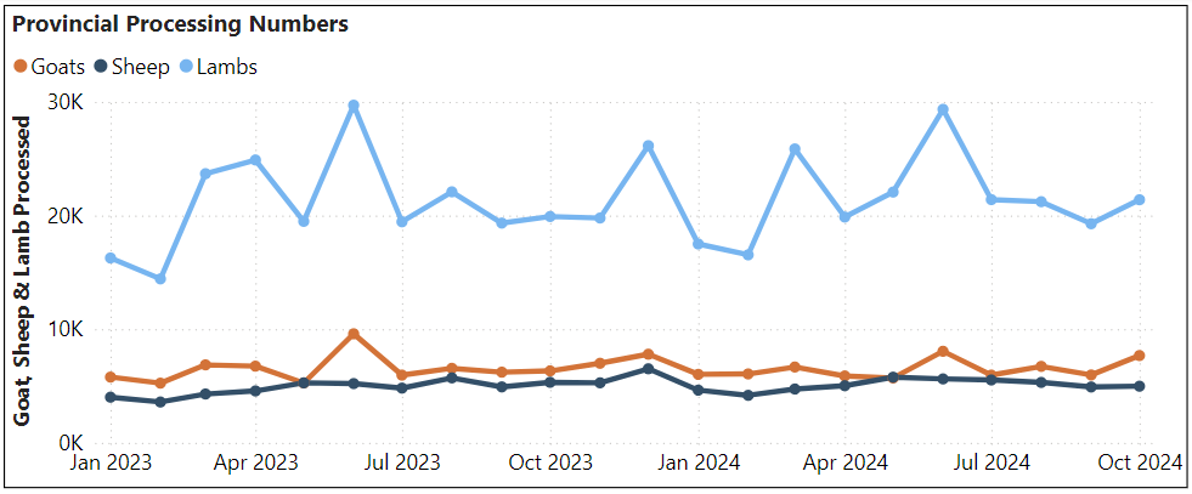
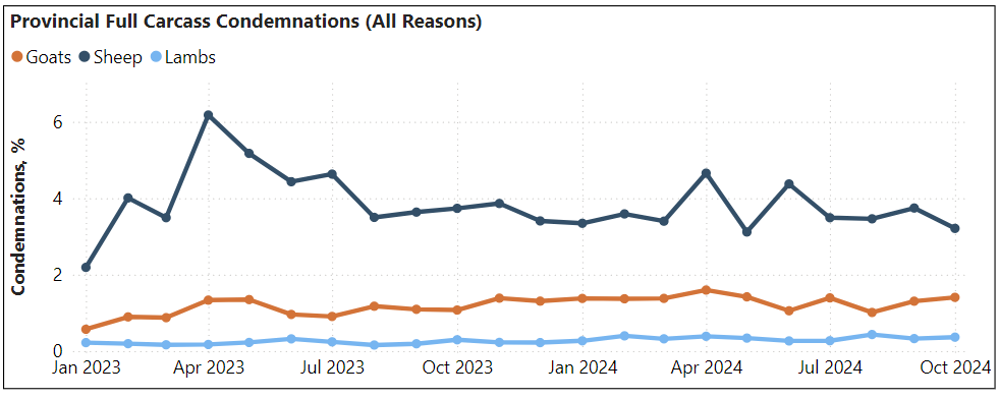
Below: Top 5 condemnation reasons for goat, sheep and lamb at provincial abattoirs, Jan to Oct 2024.
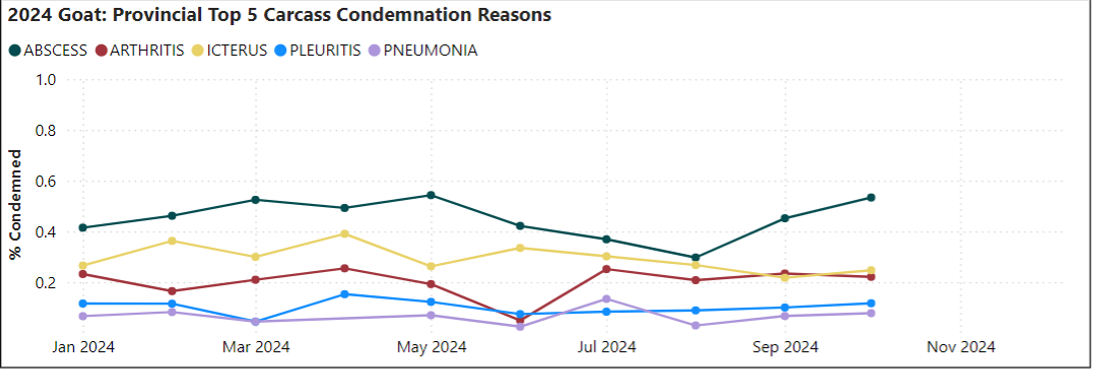


Update on Highly Pathogenic Avian Influenza (HPAI) H5N1 in U.S. livestock
HPAI H5N1 continues to circulate in U.S. dairy herds, with over 900 detections confirmed to date. There have been no detections in small ruminants since March 2024, which involved a different virus strain than what is currently affecting dairy cattle. To date, there have been no detections of HPAI H5N1 in Canadian livestock. HPAI is a federally reportable disease to the CFIA and is a zoonotic pathogen. If you observe livestock with clinical signs consistent with Influenza A (H5N1), producers should report clinical signs or suspected illness to their veterinarian immediately, veterinarians should contact their local CFIA animal health office if there is a high degree of suspicion.
If you find sick or dead birds or other wildlife on your property, report these findings to the Canadian Wildlife Health Cooperative (CWHC) who may arrange for submission of wildlife for testing.
Updates from the Canadian Food Inspection Agency (CFIA): Information for producers and veterinarians on the latest Canadian information and guidance, including a description of clinical signs in affected cattle.
Updates from the U.S. Department of Agriculture – Animal and Plant Health Inspection Service: Updated case numbers of HPAI in U.S. livestock, biosecurity guidance, and milk safety documents.
Small Flock Sheep and Goat Course for veterinarians & veterinary professionals
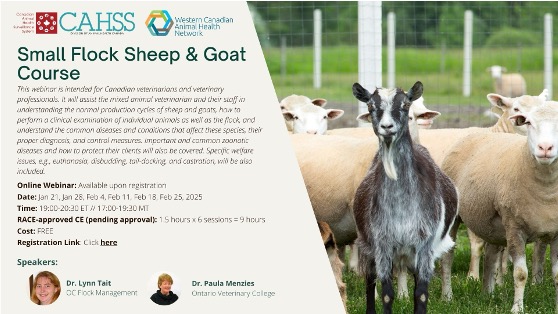
This webinar is intended for Canadian veterinarians and veterinary professionals. It will assist the mixed animal veterinarian and their staff in understanding the normal production cycles of sheep and goats, how to perform a clinical examination of individual animals as well as the flock, and understand the common diseases and conditions that affect these species, their proper diagnosis, and control measures. Important and common zoonotic diseases and how to protect their clients will also be covered. Specific welfare issues, e.g., euthanasia, disbudding, tail-docking, and castration, will be also included.
Date: Jan 21, Jan 28, Feb 4, Feb 11, Feb 18, Feb 25, 2025
Time: 19:00-20:30 ET // 17:00-18:30 MT
RACE-approved CE (pending approval): 1.5 hours x 6 sessions = 9 hours
Cost: FREE
Register: Register
Speakers: Dr. Lynn Tait, Dr. Paula Menzies
Reminder: Find more small ruminant resources on the
